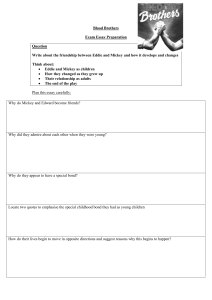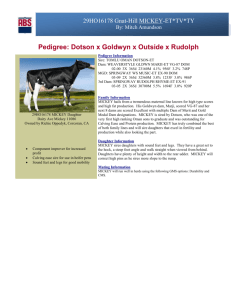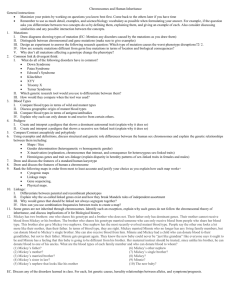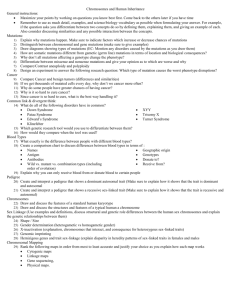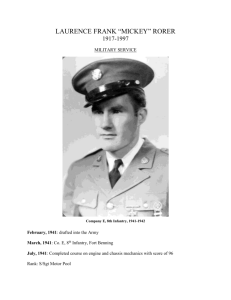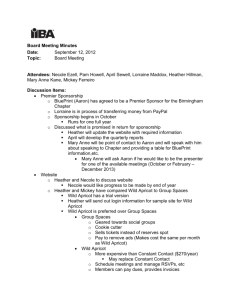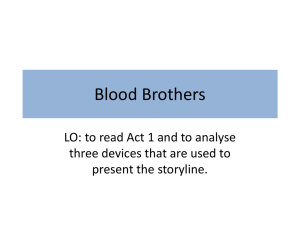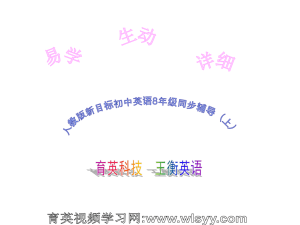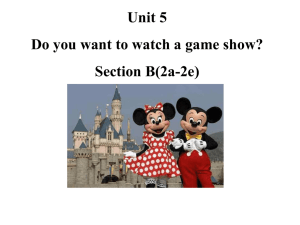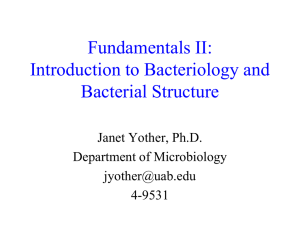Peptidoglycan
advertisement
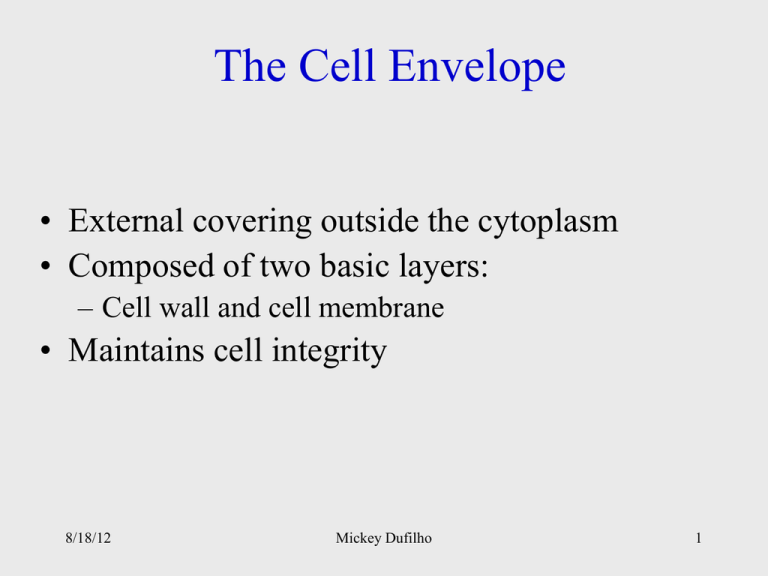
The Cell Envelope • External covering outside the cytoplasm • Composed of two basic layers: – Cell wall and cell membrane • Maintains cell integrity 8/18/12 Mickey Dufilho 1 Insert figure 4.12 Comparative cell envelopes 8/18/12 Mickey Dufilho 2 Structure of Cell Walls • Determines cell shape, prevents lysis (bursting) or collapsing due to changing osmotic pressures • Peptidoglycan is primary component: – Unique macromolecule composed of a repeating framework of long glycan chains cross-linked by short peptide fragments 8/18/12 Mickey Dufilho 3 Peptidoglycan 8/18/12 Mickey Dufilho 4 Gram-Positive Cell Wall • Thick, homogeneous sheath of peptidoglycan – 20-80 nm thick – Includes teichoic acid and lipoteichoic acid: – Some cells have a periplasmic space, between the cell membrane and cell wall 8/18/12 Mickey Dufilho 5 8/18/12 Mickey Dufilho 6 Gram-Negative Cell Wall • Composed of an outer membrane and a thin peptidoglycan layer • Outer membrane is similar to cell membrane bilayer structure – Outermost layer contains lipopolysaccharides and lipoproteins (LPS) • Lipid portion (endotoxin) may become toxic when released during infections • May function as receptors and blocking immune response • Contain porin proteins in upper layer – regulate molecules entering and leaving cell – Bottom layer is a thin sheet of peptidoglycan • Periplasmic space above and below peptidoglycan 8/18/12 Mickey Dufilho 7 8/18/12 Mickey Dufilho 8 Comparison of Gram-Positive and Gram-Negative 8/18/12 Mickey Dufilho 9 The Gram Stain • Differential stain that distinguishes cells with a grampositive cell wall from those with a gram-negative cell wall – Gram-positive - retain crystal violet and stain purple – Gram-negative - lose crystal violet and stain red from safranin counterstain • Important basis of bacterial classification and identification • Practical aid in diagnosing infection and guiding drug treatment 8/18/12 Mickey Dufilho 10 8/18/12 Mickey Dufilho 11 8/18/12 Mickey Dufilho 12
